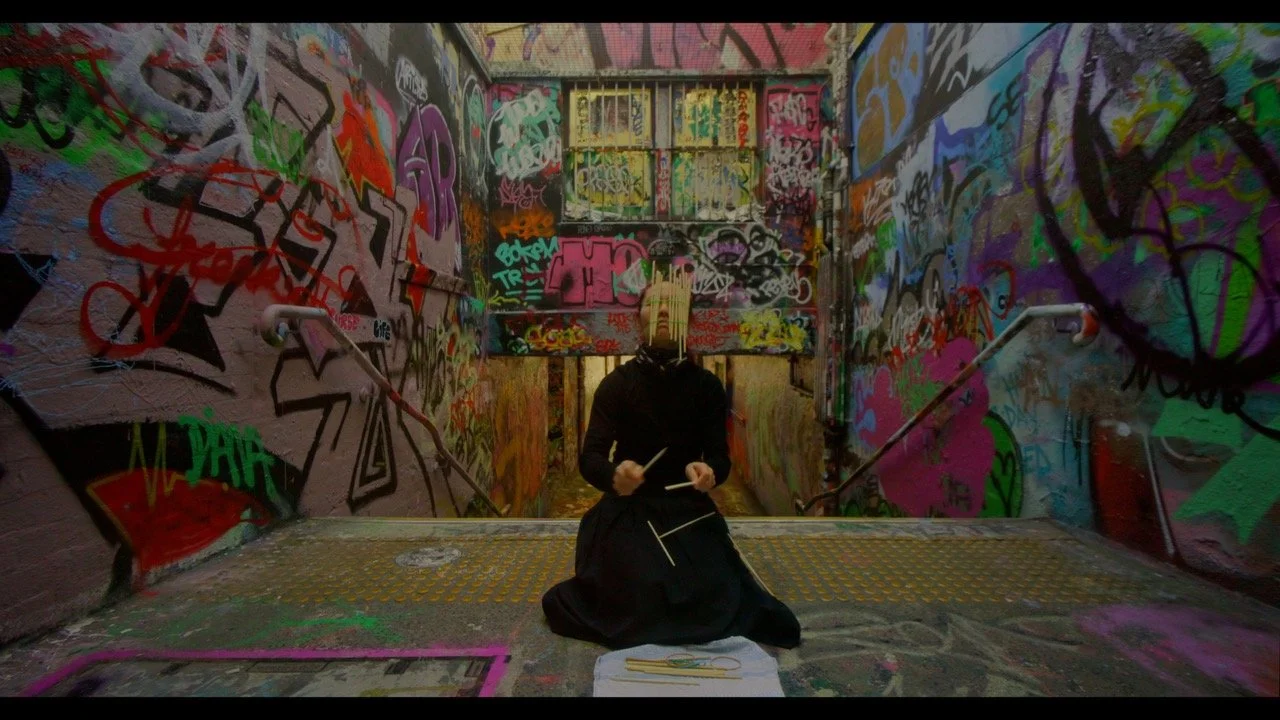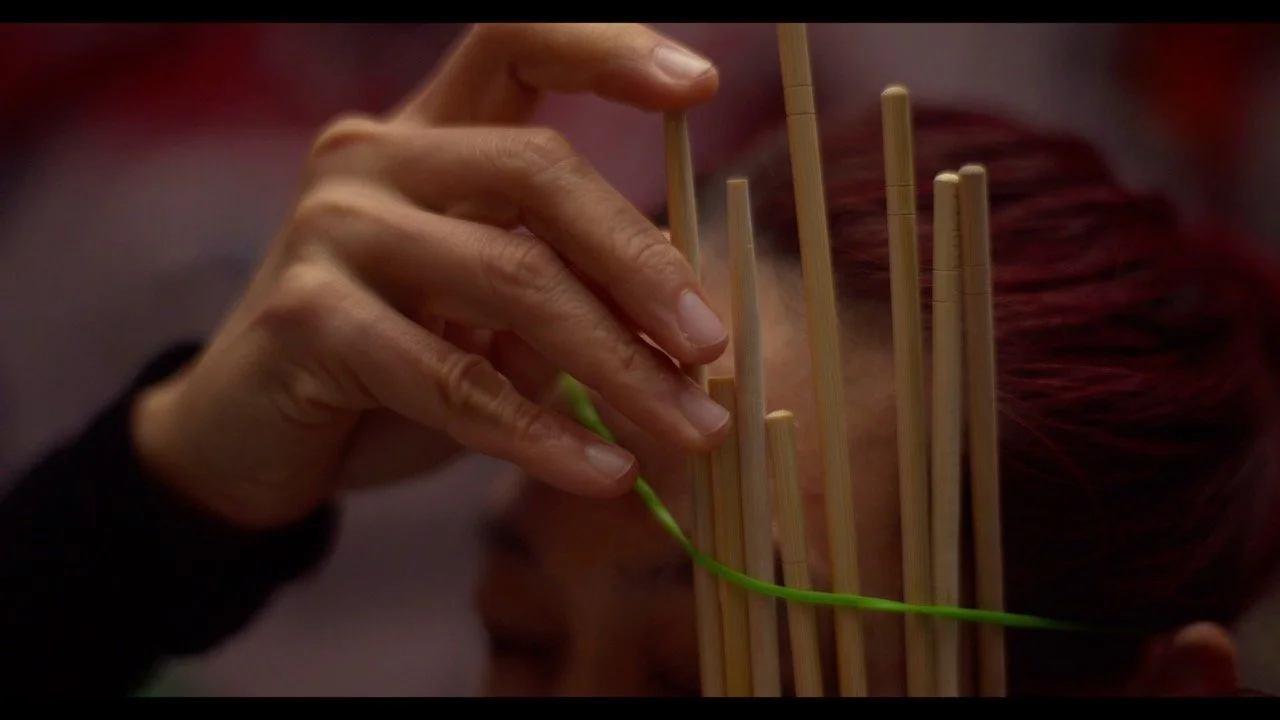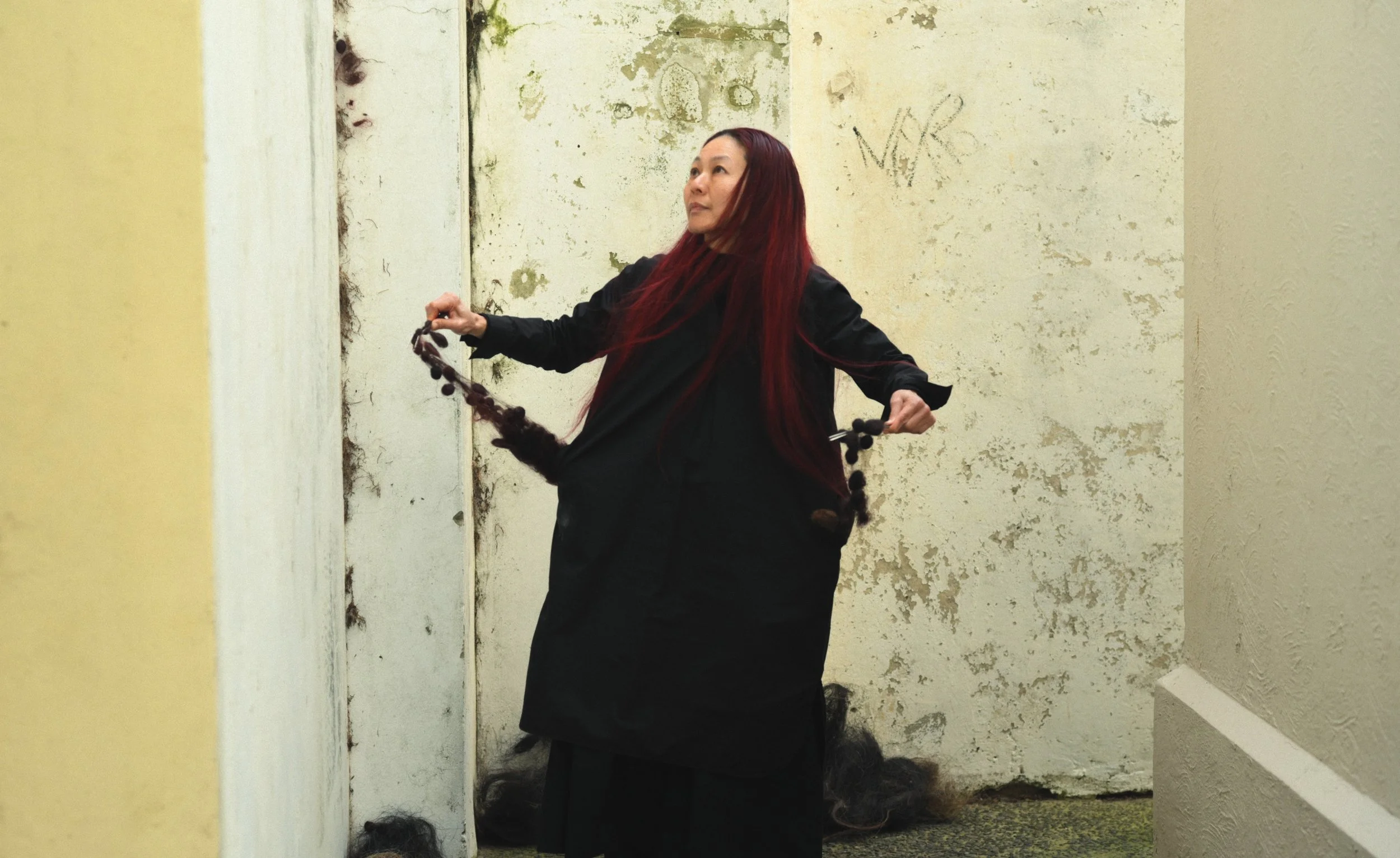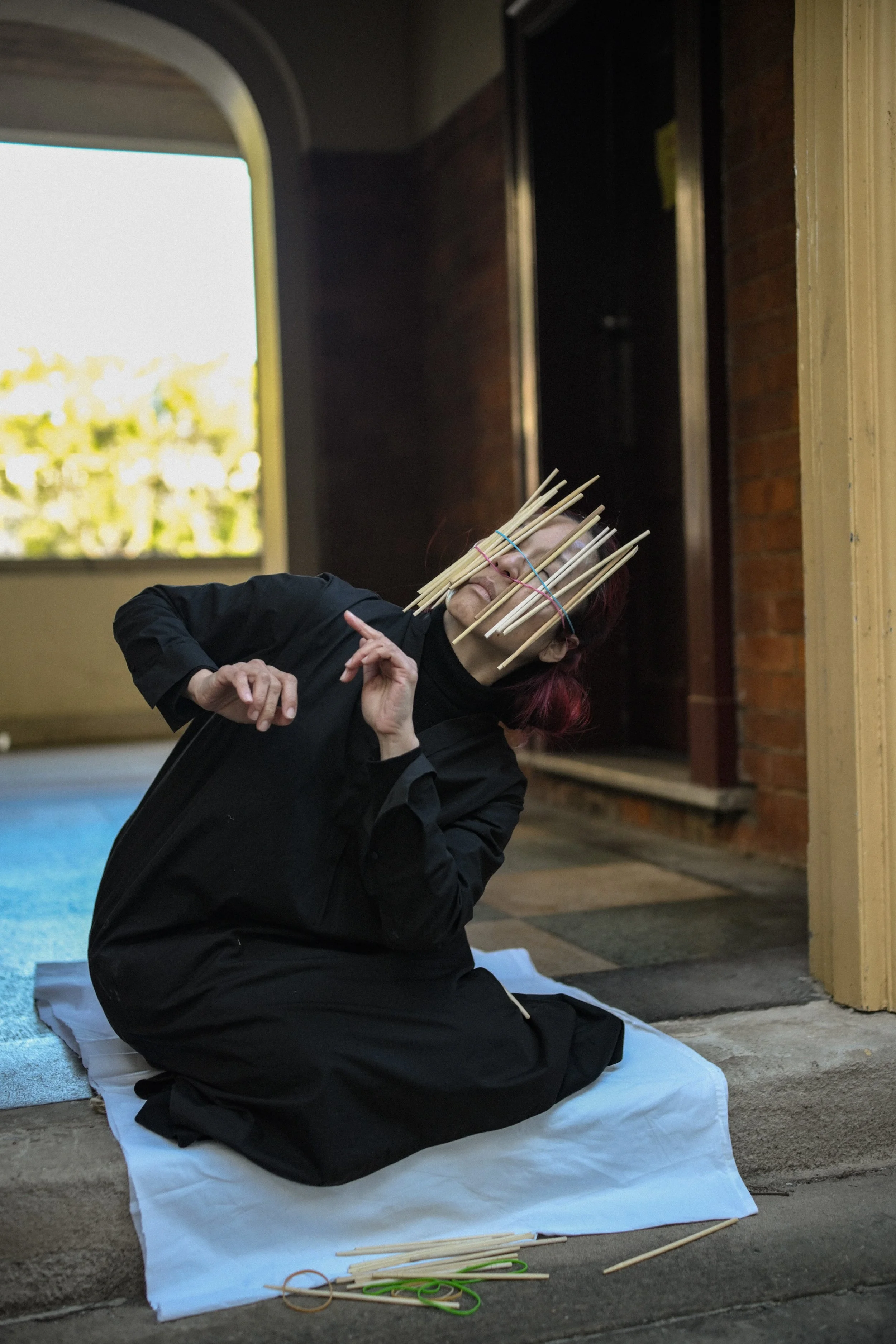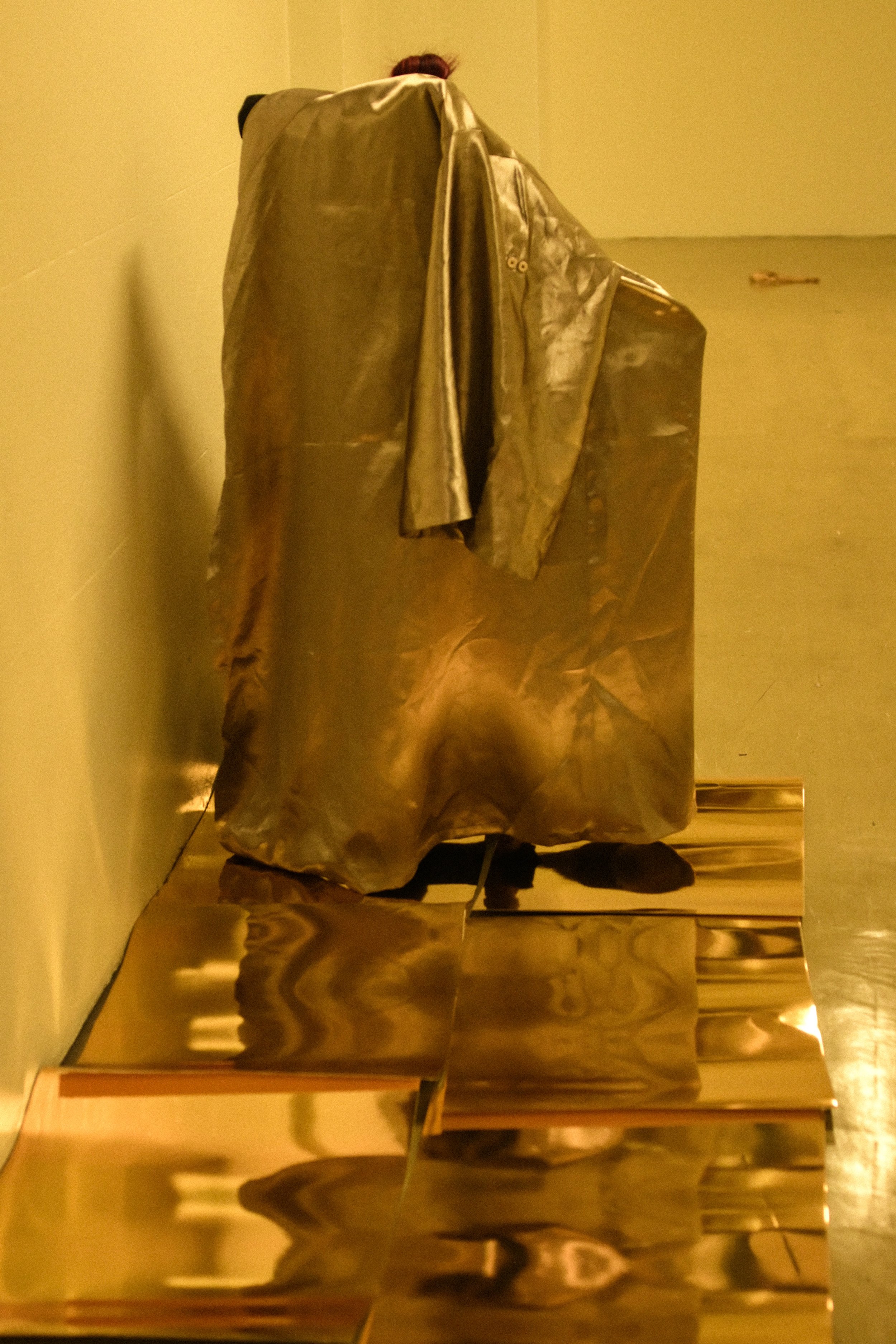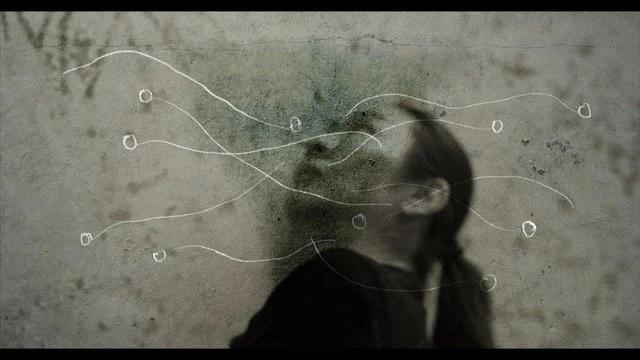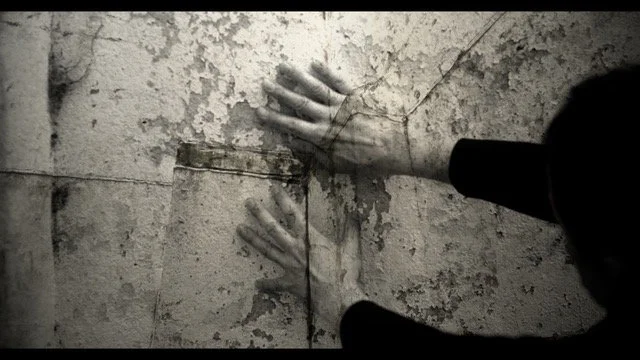Convergences, Relevances
Rex Cramphorn Performance Research Studio’s
artist-in-residence program in collaboration with Samuel James,
hosted by the discipline of Theatre and Performance Studies (TaPS) at the University of Sydney.
17-28 June 2025
Campus Performance Sessions (via WhatsApp Live Location)
25, 26, 27 June 2025, 1.00pm - 6.30pm
Presentation & Screening of Residency Process for TaPS Research Seminar
19 September, 3.00 - 5.00pm
All photos, videos and editing by @samueljames
Thank you to Barbara Campbell and Richard Manner for your help and support. Thank you to Alan Schacher and Linden Braye for walking and talking about material-to-place ideas, and Ryuichi Fujimura for performing with me at certain sites on Day 1 & 2.
Brief Description
Convergences, Relevances is a live performance art process that observes how experience becomes embodied language while traversing the Camperdown campus of the University of Sydney. As a Rex Cramphorn artist-in-resident collaborating with video artist Sam James, I wanted to physically explore the social pathways that connect the University’s buildings and public spaces, offering the campus community an opportunity to witness our process. We sought to uncover the convergences between materiality and phenomenology. Our practice utilised filmed performance, the memory of place, and bodily practices as conduits, drawing from multiple perspectives.
As a point of acknowledgement, our approach during this brief residency was not able to properly facilitate the sharing of knowledge and memories of the Aboriginal communities who had engaged in significant place-making activities, before the land was levelled and buildings were constructed on this campus.
The Thinking
Walking served as a starting point for uncovering choreographic trajectories throughout the campus at various times of day and night, engaging with how the campus community related to existing objects and features in public spaces. In doing so, I am reflecting on how our experience becomes (multi artform) language; the way we are able to perceive things as they are, is a life practice, better experienced viscerally through the body.
How can the dissolution of process and perceived performance ‘work’, whilst we search out the relationship between place, materiality, body, time and image on already-familiar grounds?
Don Ihde’s framework of Experimental Phenomenology, particularly his notion of multistabilities, offers a profound lens through which to interrogate the fluid boundaries between process and performance in site-responsive work. When the familiar ground—already layered with histories of place, habitual material engagements, temporality, bodily memory, and visual traces—becomes the stage, the ‘work’ dissolves into a dynamic interplay rather than a fixed artifact. This dissolution is not a loss but rather an expansion; it unfolds as a rich, overlapping field where perception and action continually reconfigure one another.
In my practice, paying close attention to the activation of bodily memories through subtle, expressive gestures—whether in movement, repose, or everyday gestures—creates a temporal tether to place, evoking histories embedded in both body and environment. Here, the body acts as a mediator and a vessel for memory, channeling affect across time. The use of found materials and objects functions as an extended sensory apparatus, mediating spatial experience and provoking emergent imagery in public spaces. This intermediation rearticulates the mundane surroundings into extraordinary perceptual encounters—uniting the ordinary with the image as a participatory invocation rather than passive viewing.
The insistence on extending durations of witnessing serves to soften the temporal markers distinguishing process from presentation. It cultivates an immersive encounter where spectators are invited to linger within the flux, nurturing a deeper attentiveness to the unfolding choreography of place, body, and materiality—and thereby collapsing dichotomies between performer and witness, action and observation.
Sam James’s role as both documenter and participant within the video frame evokes the notion of ‘painting before painting’: an act of foregrounding the conditions of creation itself, encouraging critical reflection on the gaze and the making. His presence disrupts the supposed transparency of documentation, folding the observer into the observed and self-interrogating the fabric of performative experience. This reflexivity parallels the deconstruction necessary for embodied phenomenological expansion—where watching and doing, recording and performing, intertwine.
As an example, the captured moment of horsehair traced and dragged between camera focus and spatial division exemplifies multistability: a single gesture simultaneously manifests as material action, visual image, spatial inscription, and temporal marker. The horsehair’s movement across the corner wall not only embodies this multilayered perception but extends the spatial narrative into an intersubjective terrain of experience—blurring distinctions between medium, body, and environment.
Through the lens of Experimental Phenomenology - multistabilities, the ‘work’ transcends static definition. Instead, it thrives as an ongoing negotiation of place, materiality, body, time, and image—inviting both performer and witness into a shared process of discovery within the familiar, revealing new depths in the ordinary.
Our creative process continued introducing unknown elements up to the very last moment, in the attempt to embrace uncertainty and multiplicity. This intentional openness fosters a continuum of dynamic interplay through either the change of trajectory between places each day, adding a new place and performance-material, shift in timing, all subject to weather and light elements—each dimension refracted the others in shifting patterns of perception. We were a little bit on edge each day, but it sharpened our awareness to navigate and respond to emergent phenomena as they unfolded.
I also placed myself the task of chopping up leek, watercress and spring onion to make a miso soup on a low heat slow cooker at 1130am. Fortunately, Richard Manner dropped into the kitchen across the 6 hour duration to check on it. One of these days, it will be in the documentation as well.
Our shared walks along various pathways revealed how much I lacked orientation. Sam remarked that this might explain why I framed the residency process in a particular way. In the desire to cultivate a multi-relational space enriched by diverse perspectives, disagreements inevitably arose. The hope is to stumble upon a ‘way’ where differing views can coexist through a series of dialogues. This shared terrain becomes a living archive where the psycho-philosophical constitution of place intersects with our personal ontologies of being-in-place. These interwoven narratives serve as a linguistic and affective matrix for the temporal container of our collaboration, informing both process and eventual form.
Below is the place and performance image of contention between Sam and I; the performance action did not capture the depth of relationship to the history of the Graffiti Tunnel for Sam…
I was responding to the vertical bars (almost lost to the neon chaos) on the windows above and behind me; the juxtaposed tension of slowly building the mask amidst the walking pace of the passersby as the work crescendoed into a 'spirit possession-like’ sitting dance. I was using the history of rituals when enacted in the streets in SouthEast Asia, as a way of reclaiming the shared use of public space especially through non-sanctioned actions. Some of the more intense shamanic rituals were policed and banned from public spaces, and only the ‘acceptable’ ones were allowed. There is a relationship to the rules of graffiti work on a sign in this tunnel, disallowed between 7am-7pm.
Sam James: “With graffiti/ street art I’m usually conscious that for the artists, it’s a reclaiming of urban space made by individuals who are part of a network who more or less know each other by their art. Urban and suburban buildings have public wallspace that can be claimed and reclaimed. Conventionally to paint over someone else’s work is a statement of rewriting territories but at University of Sydney it’s probably a different kind of space where graffiti is legalised and therefore not really to do with claiming space but perhaps more practicing the art in an open environment. In any case it traces back to a big subculture with complex meaning and many individual artists. I acknowledge that when inhabiting or working in that environment but perhaps in this context, urban/ suburban socio-political contexts don’t apply as they usually do. When street art represents histories and voices of individuals who consider themselves outsiders to the established visual art scene, I feel it should be a tentative inhabitation of these street worlds and conscious not to just appropriate them as generic but consider the voices of the subculture that is speaking to us.”
Black Bollards at Main Entrance of Uni of Syd: Bodies, Black Dresses with Ryuichi Fujimura for Session 1 and 2
Stairs up from Victoria Park, under Law Library: Bodies, Red Cloths
3 Seats Around a Tree, Eastern Ave: One Hundred Breaths; participants: Saira Krishan, Ryuichi Fujimura & passersby
Corner between RC Mills Fine Arts Building and Tennis Lawns: Bodies, Horsehair, Human Hair, Callipers
Returning, inevitably, to that persistent hum in my head—the notion that place might harbour sentience or memory—invokes the haunting phenomenology of environment as vessel and agent. It is a question that lingers beneath the explorations, a subtle and inaudible presence that pulses alongside the more tangible elements we manipulate. This semiotic resonance invites us to rethink boundaries between subject, object, and milieu, opening the possibility of a distributed consciousness immanent within geographical and sociocultural histories.
Performance image relocated to the passageway near the Squash Courts: Body, Takeaway Chopsticks, Rubber Bands
Faculty of Medicine Marble Tiled Passageway: Participants (Pamela Leung, Alan Schacher below), Square White Cloth cut to tile size
Faculty of Medicine Courtyard: Spool of Green Thread, Green Silk Skirt, Participants, Brooms made of Palm Leaves and Reeds
I developed this performance action inspired by a video of Jason Lim, a Singaporean artist working across sculpture, ceramics, performance, and photography. In the video, he slowly unraveled a spool of red thread while seated on a bench, the thread gradually accumulating beside him. This durational, contemplative gesture took place during Rebel Live Action in Chum Saeng, Thailand, 2024. The simplicity and persistence of the act resonated with my interest in ritual and spatial temporality, prompting me to extrapolate this subtle unraveled line as a metaphor for continuity, presence, and the unfolding of consciousness.





